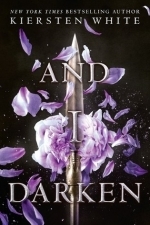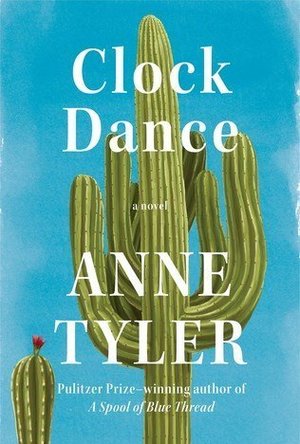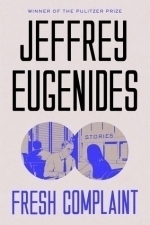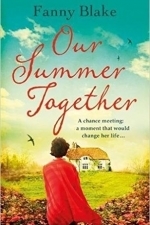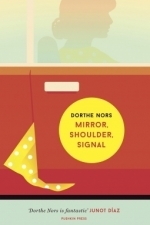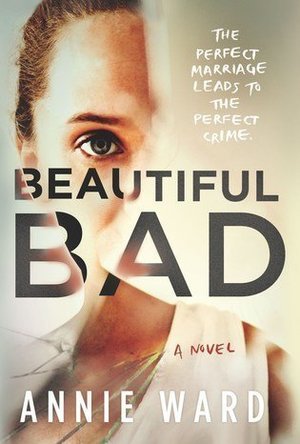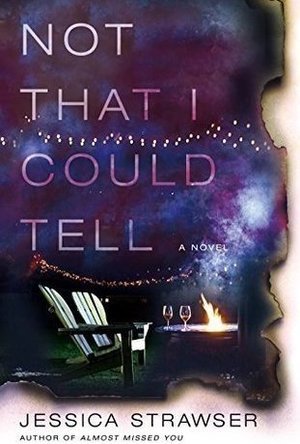Search
Louise (64 KP) rated And I Darken (The Conqueror's Saga #1) in Books
Jul 2, 2018
First I would like to say a massive thank you to Goodreads as I won myself a copy on one of their giveaways( Aren’t they great!)
And I Darken is a new Historical fiction/Re-telling of Vlad the Impaler but gender swapped. Goodreads have it listed as being a fantasy, but there is no magic or any paranormal goings on whatsoever…glad we got that cleared up.
Our story follows Ladislav (Lada) and Radu Dragwyla the descendants of Vlad Dracul, Prince of Wallachia. Vlad is a vile human being and uses his own children for bargaining with the Ottoman Empire, there lives are at risk if he does not keep to the treaties terms. Living in the Ottoman Empire is risky for Lada and Radu, Lada could easily be married off to some suitor for allegiance or killed whichever is easier for the Sultan. Running the grounds they bump into a young boy the same age as them, only to find that he is the Sultan’s son Mehmed. Mehmed is a lonely boy with only his tutors for company so he befriends them both and shares all his education and time with them, which in turn takes them out of the spotlight.
Lada is a very strong character, she is a force to be reckoned with. She is brutal,fierce and just a total badass throughout the book. Being born a woman is one almighty struggle to be taken seriously in the 1400’s. She knows that she is the rightful heir of Wallachia at the young age of 11. She wants to impress her father with her fighting skills and there is a point when she thinks she has, but the only thoughts her father has is marrying her off to a suitor and being a dutiful wife. Lada is very family orientated and has a very unique relationship with her brother Radu but she will never show any emotion as this is a sign of weakness and she is perceived as a cold-hearted bitch.
Radu was always a disappointment to his father, weak,cowardly and clinging to his nursemaids side infuriated Vlad. Radu was the more emotional of siblings, even though he was not great at fighting he had a devious and cunning mind that made him equally as dangerous as Lada.
My feelings towards the characters changed a lot throughout the book at first I thought Lada was just a psychotic child but realised she is trying to prove herself as being fierce. Radu he was very sweet throughout the book and always wanted his sister to just open up and tell him she loved him and for him to tell her his secrets and feelings. The main point is that they are flawed and this is what makes characters great.
Mehmed just annoyed me and he got in the way of Lada’s plans.
The book does contain romance, a love triangle where no one expresses their love for anyone as they are too scared of the consequences or that it will stop them from their goals in life. So the romance is frustrating to say the least.
This book has a lot of political intrigue,so be prepared for wars,treaties,soldiers and their ranks. This is Historical fiction but as in the author’s notes at the end it is not accurate and a lot is made up. Religion is also touched upon, mostly Islam with Christianity but it’s not too in your face or info dumping. The book is nearly 500 pages long! I felt it could have been shorter. I enjoyed the relationship between Radu and Lada,it was a very different set-up from what we are used to. This did take me a little longer to read as in places it was very slow and I found myself getting bored.
This book covers themes such as sibling rivalry, relationships, families, romance, feminism, sexism and politics
<img src="https://images.gr-assets.com/books/1476160834l/22817331.jpg"; width="120" height="180"/>
Now I Rise is the second installment of the And I Darken saga which is due to be released in June 2017 which I will be reading as I am interested in what is going to happen next with Lada.
Overall I rated this 3.5 out of 5 stars
And I Darken is a new Historical fiction/Re-telling of Vlad the Impaler but gender swapped. Goodreads have it listed as being a fantasy, but there is no magic or any paranormal goings on whatsoever…glad we got that cleared up.
Our story follows Ladislav (Lada) and Radu Dragwyla the descendants of Vlad Dracul, Prince of Wallachia. Vlad is a vile human being and uses his own children for bargaining with the Ottoman Empire, there lives are at risk if he does not keep to the treaties terms. Living in the Ottoman Empire is risky for Lada and Radu, Lada could easily be married off to some suitor for allegiance or killed whichever is easier for the Sultan. Running the grounds they bump into a young boy the same age as them, only to find that he is the Sultan’s son Mehmed. Mehmed is a lonely boy with only his tutors for company so he befriends them both and shares all his education and time with them, which in turn takes them out of the spotlight.
Lada is a very strong character, she is a force to be reckoned with. She is brutal,fierce and just a total badass throughout the book. Being born a woman is one almighty struggle to be taken seriously in the 1400’s. She knows that she is the rightful heir of Wallachia at the young age of 11. She wants to impress her father with her fighting skills and there is a point when she thinks she has, but the only thoughts her father has is marrying her off to a suitor and being a dutiful wife. Lada is very family orientated and has a very unique relationship with her brother Radu but she will never show any emotion as this is a sign of weakness and she is perceived as a cold-hearted bitch.
Radu was always a disappointment to his father, weak,cowardly and clinging to his nursemaids side infuriated Vlad. Radu was the more emotional of siblings, even though he was not great at fighting he had a devious and cunning mind that made him equally as dangerous as Lada.
My feelings towards the characters changed a lot throughout the book at first I thought Lada was just a psychotic child but realised she is trying to prove herself as being fierce. Radu he was very sweet throughout the book and always wanted his sister to just open up and tell him she loved him and for him to tell her his secrets and feelings. The main point is that they are flawed and this is what makes characters great.
Mehmed just annoyed me and he got in the way of Lada’s plans.
The book does contain romance, a love triangle where no one expresses their love for anyone as they are too scared of the consequences or that it will stop them from their goals in life. So the romance is frustrating to say the least.
This book has a lot of political intrigue,so be prepared for wars,treaties,soldiers and their ranks. This is Historical fiction but as in the author’s notes at the end it is not accurate and a lot is made up. Religion is also touched upon, mostly Islam with Christianity but it’s not too in your face or info dumping. The book is nearly 500 pages long! I felt it could have been shorter. I enjoyed the relationship between Radu and Lada,it was a very different set-up from what we are used to. This did take me a little longer to read as in places it was very slow and I found myself getting bored.
This book covers themes such as sibling rivalry, relationships, families, romance, feminism, sexism and politics
<img src="https://images.gr-assets.com/books/1476160834l/22817331.jpg"; width="120" height="180"/>
Now I Rise is the second installment of the And I Darken saga which is due to be released in June 2017 which I will be reading as I am interested in what is going to happen next with Lada.
Overall I rated this 3.5 out of 5 stars
Goddess in the Stacks (553 KP) rated Clock Dance in Books
Aug 11, 2018
Clock Dance was the second pick for Barnes & Noble's nation-wide Book Club. (The first was Meg Wolitzer's The Female Persuasion, back in May.) Like the first one, it was contemporary fiction, which I'm pretty meh about. When I learned it was set mostly in Baltimore, and written by a local author, I became more interested. I'm originally from Oregon, but Baltimore has become my home, and I enjoy reading about it. We had a slightly larger group than last time, but I was the only returning attendee besides the store employee, Sam, who led the discussion.
Sam opened the discussion with the same question that she started the last one with - "Did you like the main character?" It's an interesting question because most people ask "Did you like the book?" which can have a different answer. I don't usually read books in which I don't like the main character, but that's usually because I choose my books. I'm not choosing my Book Club books, so it's a good question. Unlike last time, I did like Willa. I disagreed with her judgment when it came to husbands, but I still sympathized with her. I mentioned that I didn't like that she just floated through most of her life without any real ambition, but to be honest, I've done that too. I'm not a very ambitious person - or my ambitions are quite low. I think that, perhaps, is the difference. I find a lot of fulfillment in being, effectively, my husband's personal assistant. It's fun. Willa did not seem to find it fulfilling, she just - didn't want to rock the boat.
I like how we saw each of Willa's "defining moments" - the book opens on her as a child, her volatile mother having stormed out of the house during an argument. Her mother really does a number on her as a child. I think it's why she hates to rock the boat so much. From here, we fast forward to college, and Willa's boyfriend proposing to her after gaslighting her about an event that happened on the plane. Willa's mother disapproves. Vehemently. I think that's part of why Willa accepts. Our next view of Willa's life is the accident that takes her husband's life, and its aftermath.
Then we finally start into the real meat of the book, twenty years after the death of her first husband. Her sons have grown and moved away, she has remarried, and both of her parents have passed. Her husband is a little distant, and she seems rather untethered. Then she gets the strangest phone call. It turns out her eldest son lived with a woman (Denise) and her daughter for a little while in Baltimore; he has since moved on, but "Sean's mother" is still a phone number on Denise's emergency contact list. So when Denise is shot in the leg and put in the hospital, a neighbor lady sees it, assumes Willa is the grandmother of the child, and calls her to come take care of her. It's a little convoluted, and Willa can't even adequately explain to her husband why she's decided to fly to Baltimore to take care of a child she has no relation to, but she does so anyway.
This is where we get to Baltimore, and, in Anne Tyler's own words, "when her story changes to Technicolor."
I actually live just outside Baltimore myself, but one of my best friends lives in Charles Village, and I could SO EASILY envision Willa's neighborhood as a street of rowhomes. (Turns out it's probably based on a neighborhood in Hamilton, according to the Baltimore Sun.) I was even mapping locations in Willa's house to my friend's rowhome! Anne Tyler really captures the spirit of Baltimore, and now I want to read more of her books, even if they are contemporary fiction!
Overall I enjoyed Clock Dance; Anne Tyler is very good at subtle character growth, which is quite realistic. People don't often change all at once. Sometimes it takes a lifetime of being told what to do before finally waking up to what you WANT to do.
You can find all my reviews at http://goddessinthestacks.wordpress.com
Sam opened the discussion with the same question that she started the last one with - "Did you like the main character?" It's an interesting question because most people ask "Did you like the book?" which can have a different answer. I don't usually read books in which I don't like the main character, but that's usually because I choose my books. I'm not choosing my Book Club books, so it's a good question. Unlike last time, I did like Willa. I disagreed with her judgment when it came to husbands, but I still sympathized with her. I mentioned that I didn't like that she just floated through most of her life without any real ambition, but to be honest, I've done that too. I'm not a very ambitious person - or my ambitions are quite low. I think that, perhaps, is the difference. I find a lot of fulfillment in being, effectively, my husband's personal assistant. It's fun. Willa did not seem to find it fulfilling, she just - didn't want to rock the boat.
I like how we saw each of Willa's "defining moments" - the book opens on her as a child, her volatile mother having stormed out of the house during an argument. Her mother really does a number on her as a child. I think it's why she hates to rock the boat so much. From here, we fast forward to college, and Willa's boyfriend proposing to her after gaslighting her about an event that happened on the plane. Willa's mother disapproves. Vehemently. I think that's part of why Willa accepts. Our next view of Willa's life is the accident that takes her husband's life, and its aftermath.
Then we finally start into the real meat of the book, twenty years after the death of her first husband. Her sons have grown and moved away, she has remarried, and both of her parents have passed. Her husband is a little distant, and she seems rather untethered. Then she gets the strangest phone call. It turns out her eldest son lived with a woman (Denise) and her daughter for a little while in Baltimore; he has since moved on, but "Sean's mother" is still a phone number on Denise's emergency contact list. So when Denise is shot in the leg and put in the hospital, a neighbor lady sees it, assumes Willa is the grandmother of the child, and calls her to come take care of her. It's a little convoluted, and Willa can't even adequately explain to her husband why she's decided to fly to Baltimore to take care of a child she has no relation to, but she does so anyway.
This is where we get to Baltimore, and, in Anne Tyler's own words, "when her story changes to Technicolor."
I actually live just outside Baltimore myself, but one of my best friends lives in Charles Village, and I could SO EASILY envision Willa's neighborhood as a street of rowhomes. (Turns out it's probably based on a neighborhood in Hamilton, according to the Baltimore Sun.) I was even mapping locations in Willa's house to my friend's rowhome! Anne Tyler really captures the spirit of Baltimore, and now I want to read more of her books, even if they are contemporary fiction!
Overall I enjoyed Clock Dance; Anne Tyler is very good at subtle character growth, which is quite realistic. People don't often change all at once. Sometimes it takes a lifetime of being told what to do before finally waking up to what you WANT to do.
You can find all my reviews at http://goddessinthestacks.wordpress.com
Kristy H (1252 KP) rated Fresh Complaint in Books
Jan 10, 2018
Jeffrey Eugenides' short story collection features a variety of stories written across the course of his career, many featured earlier in various publications in previous forms. From the sperm switching antics of "Baster" to the complications of nationality and marriage in "Fresh Complaint" to money and morality in "Great Experiment," we're treated to Eugenides' usual excellent writing and perspective on characters and life.
I often skip story collections, as I tend to feel a loss with them, as if the tale is unfinished, and I just want more details about each character and their motivations and end-state. I picked up FRESH COMPLAINT based solely on my love for Eugenides (Middlesex is an all-time favorite). I won't lie: I still felt that same unfinished feeling at the end of most of the stories. Clearly I just am meant more for long-form fiction. I also hadn't realized when I picked up the book that most of the stories were previously published, but luckily I am not usually reading The New Yorker and such, so I hadn't come across any of these previously.
One of the most exciting discoveries for me was, upon completing "Baster," confirming that it was indeed the premise for the silly film "The Switch" with Jason Bateman and Jennifer Aniston that is an incredibly guilty pleasure of mine. The story differs from the film, but you can clearly see how it's the base, and it's quite enjoyable.
Another favorite of mine was "Fresh Complaint," the final story in the collection, and clearly where it gets its title. We meet a young woman, Prakrtri, who is struggling with the fact that her family is trying to arrange a marriage for her, and a college professor who is traveling for work. How their paths cross is quite interesting. It's detailed, touching, and yet disturbing.
My other favorite was "Great Experiment" featuring an editor, Kendall, in his mid-thirties. He's comparing himself (unfavorably) to his peers, as he struggles financially in his job and resentfully watches his wealthy boss live well while not even providing Kendall health insurance. The story takes an interesting turn, and, as with much of Eugenides work, seems to have a greater message for us.
Overall, I didn't enjoy this as much as an Eugenides novel, because there just isn't the time to fall for his nuanced characters. I still enjoyed many of the stories and realize I probably gravitated toward "Fresh Complaint" and "Great Experiment" because they were some of the longer tales in the collection. If you like Eugenides, you may want to pick up this collection (provided you haven't already read the stories elsewhere). If you haven't read him in any form, go find Middlesex instead. 3.5 stars.
I often skip story collections, as I tend to feel a loss with them, as if the tale is unfinished, and I just want more details about each character and their motivations and end-state. I picked up FRESH COMPLAINT based solely on my love for Eugenides (Middlesex is an all-time favorite). I won't lie: I still felt that same unfinished feeling at the end of most of the stories. Clearly I just am meant more for long-form fiction. I also hadn't realized when I picked up the book that most of the stories were previously published, but luckily I am not usually reading The New Yorker and such, so I hadn't come across any of these previously.
One of the most exciting discoveries for me was, upon completing "Baster," confirming that it was indeed the premise for the silly film "The Switch" with Jason Bateman and Jennifer Aniston that is an incredibly guilty pleasure of mine. The story differs from the film, but you can clearly see how it's the base, and it's quite enjoyable.
Another favorite of mine was "Fresh Complaint," the final story in the collection, and clearly where it gets its title. We meet a young woman, Prakrtri, who is struggling with the fact that her family is trying to arrange a marriage for her, and a college professor who is traveling for work. How their paths cross is quite interesting. It's detailed, touching, and yet disturbing.
My other favorite was "Great Experiment" featuring an editor, Kendall, in his mid-thirties. He's comparing himself (unfavorably) to his peers, as he struggles financially in his job and resentfully watches his wealthy boss live well while not even providing Kendall health insurance. The story takes an interesting turn, and, as with much of Eugenides work, seems to have a greater message for us.
Overall, I didn't enjoy this as much as an Eugenides novel, because there just isn't the time to fall for his nuanced characters. I still enjoyed many of the stories and realize I probably gravitated toward "Fresh Complaint" and "Great Experiment" because they were some of the longer tales in the collection. If you like Eugenides, you may want to pick up this collection (provided you haven't already read the stories elsewhere). If you haven't read him in any form, go find Middlesex instead. 3.5 stars.
Hazel (1853 KP) rated Our Summer Together in Books
Sep 11, 2017
Second Chance at Love and Life
Review I received this book for free through Goodreads First Reads.
This latest book by women’s fiction author Fanny Blake is an uplifting story about family and finding love later in life. Our Summer Together begins with Caro, a portrait painter, and part-time art teacher, running around after her two adult daughters, Lauren and Amy. With barely a moment to herself, Caro flits between looking after her three-year-old grandson and helping out at Amy’s florist shop. However, one day, a brief encounter on the train home sparks excitement back into her life.
From the train to decorating her house and, finally, becoming her lodger, Caro gets to know the mysterious Damir as he gradually opens up about his past. Despite being fifteen years younger than her, Caro falls in love with the Bosnian and he with her, but can this elation last?
Despite her new chance at love, Caro has so many other things to worry about. Her ex-husband Chris is filing for divorce so that he can marry his new, much younger woman. However, this involves selling the house that Caro lives in and where her children grew up. On top of that, her eldest daughter, Lauren, is sceptical about Damir and is not afraid of saying so. With life as she knew it crashing down around her, Caro must decide whether Damir is worth it, but, most importantly, does he really want her in his life?
The title of the book, Our Summer Together, creates a sense of foreboding from the very beginning. Implying that Caro and Damir will only have one season together puts the reader on tenterhooks: what will go wrong? Desperate for a happy ending, we plough through the chapters wishing that their happiness could last forever.
It is refreshing to read about a romance developing between older characters rather than the typical twenty or thirty-something. A second chance at love feels much more satisfying than a will-they-won’t-they, playing hard-to-get attempt at a first serious relationship.
Alongside the love and joyfulness is a darker history that opens the readers’ eyes to events occurring during their lifetime that they may not have been very aware of. Growing up in Bosnia, Damir was subjected to war and violence, losing all his family and having a disastrous start at adulthood. For Damir, his relationship with Caro is not only a second-chance at love, but a second-chance at life, too.
Our Summer Together is a relaxing book to read that can either be devoured quickly or eked out over a period of time. With humour, reality and a range of emotions, it is impossible to find the story boring. Whatever your usual genre of choice, this book will be a refreshing change
This latest book by women’s fiction author Fanny Blake is an uplifting story about family and finding love later in life. Our Summer Together begins with Caro, a portrait painter, and part-time art teacher, running around after her two adult daughters, Lauren and Amy. With barely a moment to herself, Caro flits between looking after her three-year-old grandson and helping out at Amy’s florist shop. However, one day, a brief encounter on the train home sparks excitement back into her life.
From the train to decorating her house and, finally, becoming her lodger, Caro gets to know the mysterious Damir as he gradually opens up about his past. Despite being fifteen years younger than her, Caro falls in love with the Bosnian and he with her, but can this elation last?
Despite her new chance at love, Caro has so many other things to worry about. Her ex-husband Chris is filing for divorce so that he can marry his new, much younger woman. However, this involves selling the house that Caro lives in and where her children grew up. On top of that, her eldest daughter, Lauren, is sceptical about Damir and is not afraid of saying so. With life as she knew it crashing down around her, Caro must decide whether Damir is worth it, but, most importantly, does he really want her in his life?
The title of the book, Our Summer Together, creates a sense of foreboding from the very beginning. Implying that Caro and Damir will only have one season together puts the reader on tenterhooks: what will go wrong? Desperate for a happy ending, we plough through the chapters wishing that their happiness could last forever.
It is refreshing to read about a romance developing between older characters rather than the typical twenty or thirty-something. A second chance at love feels much more satisfying than a will-they-won’t-they, playing hard-to-get attempt at a first serious relationship.
Alongside the love and joyfulness is a darker history that opens the readers’ eyes to events occurring during their lifetime that they may not have been very aware of. Growing up in Bosnia, Damir was subjected to war and violence, losing all his family and having a disastrous start at adulthood. For Damir, his relationship with Caro is not only a second-chance at love, but a second-chance at life, too.
Our Summer Together is a relaxing book to read that can either be devoured quickly or eked out over a period of time. With humour, reality and a range of emotions, it is impossible to find the story boring. Whatever your usual genre of choice, this book will be a refreshing change
Hazel (1853 KP) rated Mirror, Shoulder, Signal in Books
Aug 7, 2017
Danish Literature
I received this book for free through Goodreads First Reads.
Shortlisted for The Man Booker International Prize 2017, Mirror, Shoulder, Signal is a piece of Danish literature by Dorthe Nors, translated into English by Misha Hoekstra. It has a tragicomic nature, introducing the 40-year-old Sonja, a woman who is trying but failing to move in the right direction.
Sonja is the type of character full of flaws that readers will recognise in themselves. Although she has successfully become self-employed, translating crime novels from Swedish into Danish, Sonja feels she has not accomplished anything in life. Despite one unlucky attempt at love, Sonja has remained single, moving to Copenhagen in an attempt to find herself. Determined to earn her driving licence Sonja braves the lessons in the busy city, however, she cannot handle gear changes. In other areas of her life, she tries weekly massage therapy and attempts a meditation exercise. Unfortunately, Sonja remains apathetic to the whole scenario and would rather be somewhere warm eating cake.
Mirror, Shoulder, Signal is a cleverly crafted title that makes repeat appearances throughout the narrative. The three words are instructions that Sonja repeats as a mantra each time she pulls away from the curb in her instructor’s car. The majority of the book takes place during these lessons, or, if not there, face down on Ellen’s massage table.
Sonja’s narration constantly varies between the present and memories from her childhood. A particular focus is the recollection of events involving her sister Kate. They may not have been close when they were young, but now it is almost impossible for Sonja to contact her sister. It is as though Sonja has been alienated from her own family.
Embellished with sexual innuendos, poor attempts at humour fail to bring any excitement to the story. There is no clear plot. At the beginning, readers may wonder if she will earn her driver’s licence – she does not – find love – she does not – find herself – she does not. What, then, was the point of this novel? Apart from a suggestion of future happiness in the final chapter of the book, there is no sense of resolution.
The issue with some translated stories is the loss of original intent and meanings. This does not seem to have been much of a problem in this instance; however, the translator has not been entirely successful in converting the Danish into a naturally flowing English.
Overall, Mirror, Shoulder, Signal is a bit of a disappointment, especially because it has been shortlisted for such a prestigious prize. Since the prize is meant to be awarding the author for continued creativity and contribution to fiction, it makes you wonder what critics saw in this novel to believe it stood a chance at earning the honour.
Shortlisted for The Man Booker International Prize 2017, Mirror, Shoulder, Signal is a piece of Danish literature by Dorthe Nors, translated into English by Misha Hoekstra. It has a tragicomic nature, introducing the 40-year-old Sonja, a woman who is trying but failing to move in the right direction.
Sonja is the type of character full of flaws that readers will recognise in themselves. Although she has successfully become self-employed, translating crime novels from Swedish into Danish, Sonja feels she has not accomplished anything in life. Despite one unlucky attempt at love, Sonja has remained single, moving to Copenhagen in an attempt to find herself. Determined to earn her driving licence Sonja braves the lessons in the busy city, however, she cannot handle gear changes. In other areas of her life, she tries weekly massage therapy and attempts a meditation exercise. Unfortunately, Sonja remains apathetic to the whole scenario and would rather be somewhere warm eating cake.
Mirror, Shoulder, Signal is a cleverly crafted title that makes repeat appearances throughout the narrative. The three words are instructions that Sonja repeats as a mantra each time she pulls away from the curb in her instructor’s car. The majority of the book takes place during these lessons, or, if not there, face down on Ellen’s massage table.
Sonja’s narration constantly varies between the present and memories from her childhood. A particular focus is the recollection of events involving her sister Kate. They may not have been close when they were young, but now it is almost impossible for Sonja to contact her sister. It is as though Sonja has been alienated from her own family.
Embellished with sexual innuendos, poor attempts at humour fail to bring any excitement to the story. There is no clear plot. At the beginning, readers may wonder if she will earn her driver’s licence – she does not – find love – she does not – find herself – she does not. What, then, was the point of this novel? Apart from a suggestion of future happiness in the final chapter of the book, there is no sense of resolution.
The issue with some translated stories is the loss of original intent and meanings. This does not seem to have been much of a problem in this instance; however, the translator has not been entirely successful in converting the Danish into a naturally flowing English.
Overall, Mirror, Shoulder, Signal is a bit of a disappointment, especially because it has been shortlisted for such a prestigious prize. Since the prize is meant to be awarding the author for continued creativity and contribution to fiction, it makes you wonder what critics saw in this novel to believe it stood a chance at earning the honour.
Whatchareadin (174 KP) rated Beautiful Bad in Books
Apr 3, 2019
Maddie is a wife and a mother who would do anything to protect her family and those she loves. After college Maddie decides she is going to to go Bulgaria to write and tutor. She isn't quite alone as her friend Joanna, is not too far away in Macedonia. When she visits Joanna it's always a good time, even though they are in a war-torn country. When Maddie meets Ian, there is an instant connection, but time and opportunity are never on their side, so they see each other when they can, and are friends for a very long time. Eventually, they are able to get together and build a life and start a family. But everything isn't as it seems. Ian is suffering from PTSD from his many years serving as protection in Iraq, Bosnia, and other countries. And Maddie has anxiety about it all. Will their relationship last, or will the events of their pasts be too much for their future to handle.
Thank you to NetGalley and Harlequin-Park Row for the opportunity to read and review this book.
The story starts with a call to 911 and you can hear a woman and child in distress. The book takes you back and forth from Maddie's time in Bulgaria, to the days and weeks leading up to this 911 call. I will admit the very beginning drew me in, but then all the in between felt very unnecessary. Until you get to the end and you see everything unfold. I definitely did not see the end coming and I was pleasantly surprised.
Beautiful Bad drew me in from the beginning with the 911 call. I was disappointed a few chapters in when it seems as though the whole incident was forgotten. Then when it popped back up, I didn't even remember the characters from that time. So that is why I gave the book the lower rating. I would like to see the finished book to see if there were any differences. I read an interview with the author that said that this book started off as a memoir, but her editor convinced her to change it into fiction. I think the middle parts where the memoir that got thrown out.
Overall, I enjoyed the book and I stayed up way past my bedtime once I reached the 60% mark to finish it. The ending was really good and it made up for the slow middle. I look forward to reading more by Annie Ward.
Here is an interview that Shelf Awareness did with Annie Ward. It gives you insight on the book that I believe is valuable.
https://www.shelf-awareness.com/readers-issue.html?issue=796#m13960
Thank you to NetGalley and Harlequin-Park Row for the opportunity to read and review this book.
The story starts with a call to 911 and you can hear a woman and child in distress. The book takes you back and forth from Maddie's time in Bulgaria, to the days and weeks leading up to this 911 call. I will admit the very beginning drew me in, but then all the in between felt very unnecessary. Until you get to the end and you see everything unfold. I definitely did not see the end coming and I was pleasantly surprised.
Beautiful Bad drew me in from the beginning with the 911 call. I was disappointed a few chapters in when it seems as though the whole incident was forgotten. Then when it popped back up, I didn't even remember the characters from that time. So that is why I gave the book the lower rating. I would like to see the finished book to see if there were any differences. I read an interview with the author that said that this book started off as a memoir, but her editor convinced her to change it into fiction. I think the middle parts where the memoir that got thrown out.
Overall, I enjoyed the book and I stayed up way past my bedtime once I reached the 60% mark to finish it. The ending was really good and it made up for the slow middle. I look forward to reading more by Annie Ward.
Here is an interview that Shelf Awareness did with Annie Ward. It gives you insight on the book that I believe is valuable.
https://www.shelf-awareness.com/readers-issue.html?issue=796#m13960
Kristy H (1252 KP) rated Not That I Could Tell in Books
Mar 25, 2018
Good women's fiction tale but nothing new or surprising here
In the quiet town of Yellow Springs, Ohio, the disappearance of one of its residents, Kristin, is a big deal. She vanishes after an evening with several of her neighbors, filled with wine and conversation around the fire pit. She also takes her young twins, Aaron and Abigail. Left behind is her soon-to-be-ex-husband, Paul, a well-known ob-gyn. A window in Kristin's house is broken and some of her belongings missing. But otherwise, there is no trace or idea about where she and the twins have gone. Paul accuses her of disappearing with money owed to him. Kristin's neighbors, especially her next-door neighbor, Clara, for whom Kristin's disappearance hits a bit close to home, and Izzy, a single woman who recently moved to the neighborhood to get away from her own issues, are baffled. They realize how little they knew about their friend--and that they have no idea where she's gone.
This was an interesting one. From the beginning, this book felt familiar to me--the "something happened" after a barbecue reminiscent of Truly Madly Guilty and others I'd read lately. I was sick while reading, so I had trouble keeping the women and their backstories separate for a while. Too much cold medicine and fatigue, probably.
The book is told from various viewpoints--mainly Clara and Izzy. I was always expecting there to be more: some unexpected surprise or twist, but there never really was. The ending threw in a bit of one, but it wasn't quite what I was expecting. Still, there is a tenseness to the novel, and it can certainly be creepy at times. The novel also does a good job of capturing kids and parenthood--the weariness of the day-to-day of parenting small children, for instance. I also liked how it captured how preschools can be a microcosm of life and small towns and such a cesspool of stress and gossip.
This one moved slowly for me. I liked the characters, but wasn't drawn to them. I had some sympathy for Izzy, but also questioned her motives a lot. I should have been more drawn to Clara, but wasn't. Perhaps because, while I have small children, I don't have the same sort of neighborhood tribe as these women? I'm not sure. Not even the token lesbian neighbors could do it, though I appreciated the effort.
Overall, the story was good, but never offered the big surprise I was waiting for. Characters are interesting but I was never fully pulled into their stories.
I received a copy of this novel from the publisher and Netgalley in return for an unbiased review; more at justacatandabookatherside.blogspot.com.
This was an interesting one. From the beginning, this book felt familiar to me--the "something happened" after a barbecue reminiscent of Truly Madly Guilty and others I'd read lately. I was sick while reading, so I had trouble keeping the women and their backstories separate for a while. Too much cold medicine and fatigue, probably.
The book is told from various viewpoints--mainly Clara and Izzy. I was always expecting there to be more: some unexpected surprise or twist, but there never really was. The ending threw in a bit of one, but it wasn't quite what I was expecting. Still, there is a tenseness to the novel, and it can certainly be creepy at times. The novel also does a good job of capturing kids and parenthood--the weariness of the day-to-day of parenting small children, for instance. I also liked how it captured how preschools can be a microcosm of life and small towns and such a cesspool of stress and gossip.
This one moved slowly for me. I liked the characters, but wasn't drawn to them. I had some sympathy for Izzy, but also questioned her motives a lot. I should have been more drawn to Clara, but wasn't. Perhaps because, while I have small children, I don't have the same sort of neighborhood tribe as these women? I'm not sure. Not even the token lesbian neighbors could do it, though I appreciated the effort.
Overall, the story was good, but never offered the big surprise I was waiting for. Characters are interesting but I was never fully pulled into their stories.
I received a copy of this novel from the publisher and Netgalley in return for an unbiased review; more at justacatandabookatherside.blogspot.com.
Hazel (1853 KP) rated Mirror, Shoulder, Signal in Books
Dec 7, 2018
<i>I received this book for free through Goodreads First Reads.</i>
Shortlisted for The Man Booker International Prize 2017, <i>Mirror, Shoulder, Signal</i> is a piece of Danish literature by Dorthe Nors, translated into English by Misha Hoekstra. It has a tragicomic nature, introducing the 40-year-old Sonja, a woman who is trying but failing to move in the right direction.
Sonja is the type of character full of flaws that readers will recognise in themselves. Although she has successfully become self-employed, translating crime novels from Swedish into Danish, Sonja feels she has not accomplished anything in life. Despite one unlucky attempt at love, Sonja has remained single, moving to Copenhagen in an attempt to find herself. Determined to earn her driving licence Sonja braves the lessons in the busy city, however, she cannot handle gear changes. In other areas of her life, she tries weekly massage therapy and attempts a meditation exercise. Unfortunately, Sonja remains apathetic to the whole scenario and would rather be somewhere warm eating cake.
<i>Mirror, Shoulder, Signal</i> is a cleverly crafted title that makes repeat appearances throughout the narrative. The three words are instructions that Sonja repeats as a mantra each time she pulls away from the curb in her instructor’s car. The majority of the book takes place during these lessons, or, if not there, face down on Ellen’s massage table.
Sonja’s narration constantly varies between the present and memories from her childhood. A particular focus is the recollection of events involving her sister Kate. They may not have been close when they were young, but now it is almost impossible for Sonja to contact her sister. It is as though Sonja has been alienated from her own family.
Embellished with sexual innuendos, poor attempts at humour fail to bring any excitement to the story. There is no clear plot. At the beginning, readers may wonder if she will earn her driver’s licence – she does not – find love – she does not – find herself – she does not. What, then, was the point of this novel? Apart from a suggestion of future happiness in the final chapter of the book, there is no sense of resolution.
The issue with some translated stories is the loss of original intent and meanings. This does not seem to have been much of a problem in this instance; however, the translator has not been entirely successful in converting the Danish into a naturally flowing English.
Overall, <i>Mirror, Shoulder, Signal</i> is a bit of a disappointment, especially because it has been shortlisted for such a prestigious prize. Since the prize is meant to be awarding the author for continued creativity and contribution to fiction, it makes you wonder what critics saw in this novel to believe it stood a chance at earning the honour.
Shortlisted for The Man Booker International Prize 2017, <i>Mirror, Shoulder, Signal</i> is a piece of Danish literature by Dorthe Nors, translated into English by Misha Hoekstra. It has a tragicomic nature, introducing the 40-year-old Sonja, a woman who is trying but failing to move in the right direction.
Sonja is the type of character full of flaws that readers will recognise in themselves. Although she has successfully become self-employed, translating crime novels from Swedish into Danish, Sonja feels she has not accomplished anything in life. Despite one unlucky attempt at love, Sonja has remained single, moving to Copenhagen in an attempt to find herself. Determined to earn her driving licence Sonja braves the lessons in the busy city, however, she cannot handle gear changes. In other areas of her life, she tries weekly massage therapy and attempts a meditation exercise. Unfortunately, Sonja remains apathetic to the whole scenario and would rather be somewhere warm eating cake.
<i>Mirror, Shoulder, Signal</i> is a cleverly crafted title that makes repeat appearances throughout the narrative. The three words are instructions that Sonja repeats as a mantra each time she pulls away from the curb in her instructor’s car. The majority of the book takes place during these lessons, or, if not there, face down on Ellen’s massage table.
Sonja’s narration constantly varies between the present and memories from her childhood. A particular focus is the recollection of events involving her sister Kate. They may not have been close when they were young, but now it is almost impossible for Sonja to contact her sister. It is as though Sonja has been alienated from her own family.
Embellished with sexual innuendos, poor attempts at humour fail to bring any excitement to the story. There is no clear plot. At the beginning, readers may wonder if she will earn her driver’s licence – she does not – find love – she does not – find herself – she does not. What, then, was the point of this novel? Apart from a suggestion of future happiness in the final chapter of the book, there is no sense of resolution.
The issue with some translated stories is the loss of original intent and meanings. This does not seem to have been much of a problem in this instance; however, the translator has not been entirely successful in converting the Danish into a naturally flowing English.
Overall, <i>Mirror, Shoulder, Signal</i> is a bit of a disappointment, especially because it has been shortlisted for such a prestigious prize. Since the prize is meant to be awarding the author for continued creativity and contribution to fiction, it makes you wonder what critics saw in this novel to believe it stood a chance at earning the honour.
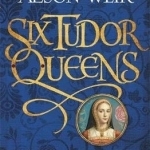
Six Tudor Queens: Katherine of Aragon, the True Queen: Six Tudor Queens 1
Book
*A Sunday Times Top Ten Bestseller* Katherine of Aragon: The True Queen by bestselling historian...
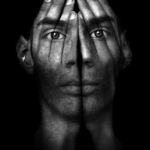
Nothing is Sacrosanct: No One Can Hide from Their Sins Forever
Book
Nothing is Sacrosanct: Intense, Raw Novel Takes Calculated Revenge on Child Abuse Aggressors;...
